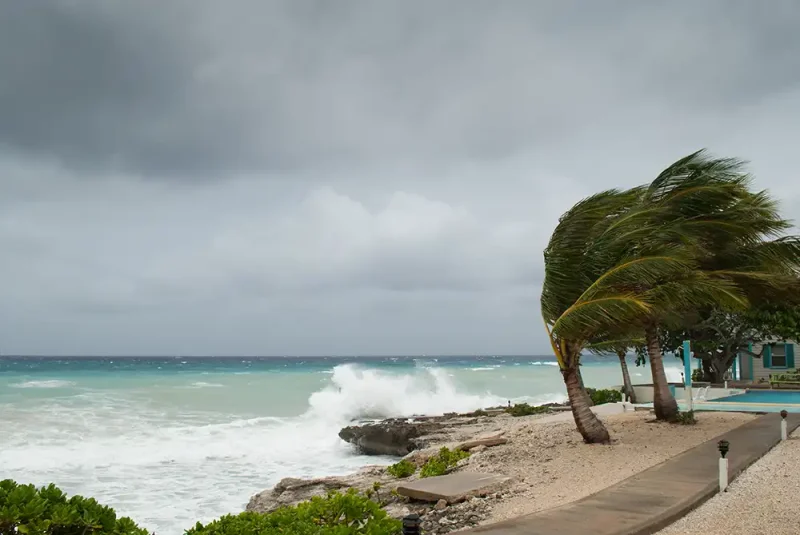Protecting Homes Along the Gulf Coast
Living along the Texas Gulf Coast means enjoying warm breezes, coastal charm, and ocean views. But it also means preparing your home for hurricane season every year. In this region, your roof is your first line of defense against powerful storms, high winds, and heavy rain. The real question is: Is your roof hurricane ready?
If your roofing system is compromised in any way, it can lead to water damage, costly repairs, and major safety risks during a storm. At Texas Coast Roofing, we want to help you spot the warning signs and take the right steps to protect your home before hurricane season strikes.

Start with a Professional Roof Inspection
The most effective way to know if your roof is ready for a hurricane is to schedule a professional inspection. At Texas Coast Roofing, we provide thorough roof assessments designed specifically for coastal homes. Our trained crews inspect every detail of your roof, from shingles and flashing to the underlayment and roof deck.
We also check attic ventilation, moisture levels, and any signs of water intrusion or structural wear. If it’s been more than a year since your last inspection—or if you’ve recently weathered a storm—now is the time to get a full evaluation.
Look for Signs of Shingle Damage
Even minor damage to your roof’s surface can become a major problem during a storm. Strong winds target weak spots, and if shingles are already loose or brittle, they can tear off easily, exposing the roof deck to water.
Watch for common red flags like missing or lifted shingles, curling edges, granule loss, and dark patches on the roof. If your shingles show signs of wear or damage, replacing them now can help you avoid more serious issues when winds pick up.
Examine Flashing and Roof Penetrations
Flashing protects vulnerable areas of your roof where leaks are most likely to occur—around chimneys, vents, valleys, and skylights. These areas need to be watertight and securely sealed to keep moisture out during driving rain.
Signs of faulty flashing include rust, visible gaps, or cracked sealant. Coastal humidity and salt air can accelerate corrosion, so it’s important to have your flashing checked annually to make sure it’s storm-ready.

Evaluate Your Roof’s Age and Materials
Older roofs are more prone to storm damage, especially if they weren’t built to current codes or installed using outdated materials. If your roof is more than 15–20 years old, it may be reaching the end of its effective life.
Different roofing materials also perform differently under pressure. At Texas Coast Roofing, we recommend using hurricane-rated shingles, clay or concrete tiles, or high-quality metal systems—all proven to perform well under coastal wind and moisture conditions. We can help you determine if your current roof meets modern standards or if it’s time for an upgrade.
Check Roof Ventilation and Drainage
Your roof must be able to manage both airflow and water effectively. Poor ventilation can cause heat and moisture to build up inside your attic, weakening the structure over time. And when heavy rain falls, blocked gutters or clogged valleys can lead to standing water and roof leaks.
Inspect soffit vents, ridge vents, and attic fans to ensure airflow is clear and functional. Also check gutters and downspouts for debris or sagging sections. These small fixes can make a big difference in how your roof handles storm conditions.
Understand Your Roofing Warranty and Insurance Coverage
Even a well-built roof can sustain damage from a major hurricane, so it’s essential to understand your roofing warranty and homeowners insurance policy. Many warranties cover manufacturing defects but may not cover damage caused by severe weather unless the roof was installed according to local building codes and wind specifications.
If your policy includes wind or hurricane protection, make sure you know what’s required in terms of documentation. Taking “before” photos of your roof and keeping inspection reports can speed up the claims process and increase your chance of full reimbursement if you ever need to file a claim.
Be Proactive, Not Reactive
Many homeowners wait until after a storm hits to assess their roof, but by then, the damage is done. A proactive approach can save you time, money, and stress. The best way to prepare your roof for hurricane season is to stay ahead of issues with regular inspections and preventive maintenance.
If you’re unsure about your roof’s condition, reach out to the experts at Texas Coast Roofing. We’ll give you an honest assessment and recommend affordable steps to improve your home’s storm resilience—whether that means minor repairs or a full roof replacement using hurricane-rated materials.
Schedule Your Hurricane Readiness Roof Inspection
At Texas Coast Roofing, we specialize in helping coastal homeowners prepare for the unpredictable. We proudly serve Corpus Christi, Rockport, Victoria, Port Aransas, and nearby areas with roof inspections, repairs, and storm-resistant upgrades.
Call us today to schedule your free roof inspection and make sure your home is hurricane ready—before the next storm arrives. Let us help you protect your roof, your home, and your peace of mind.

